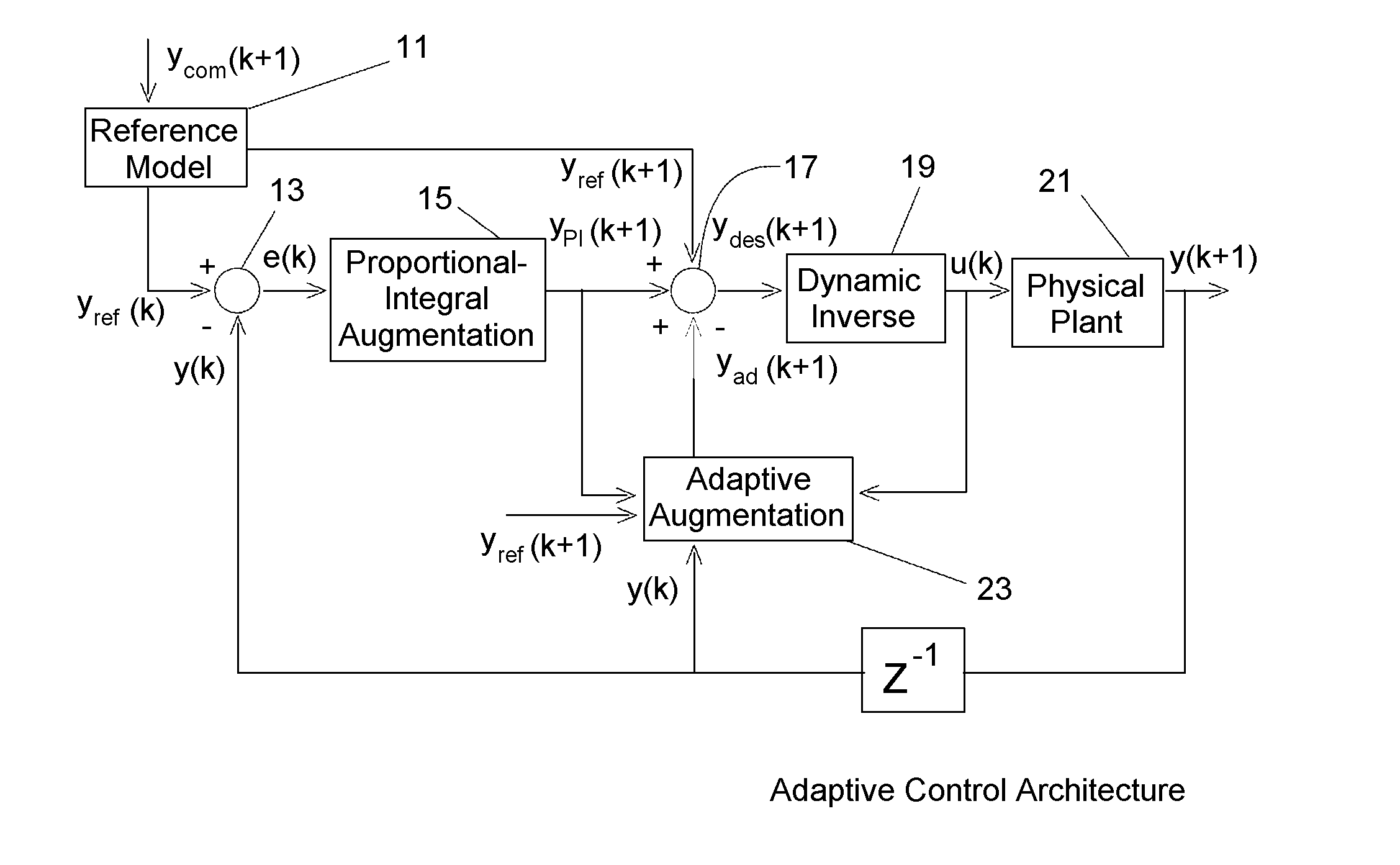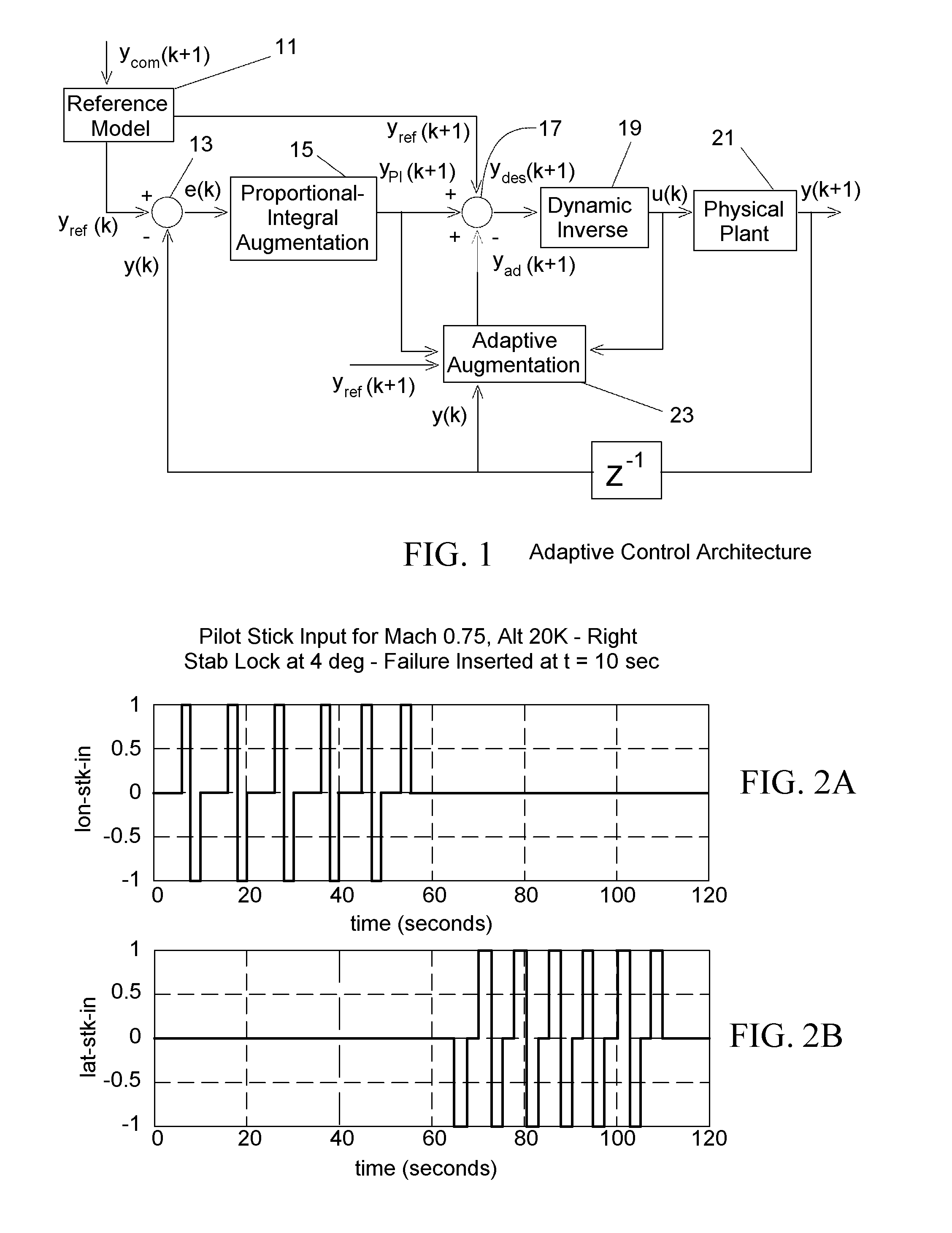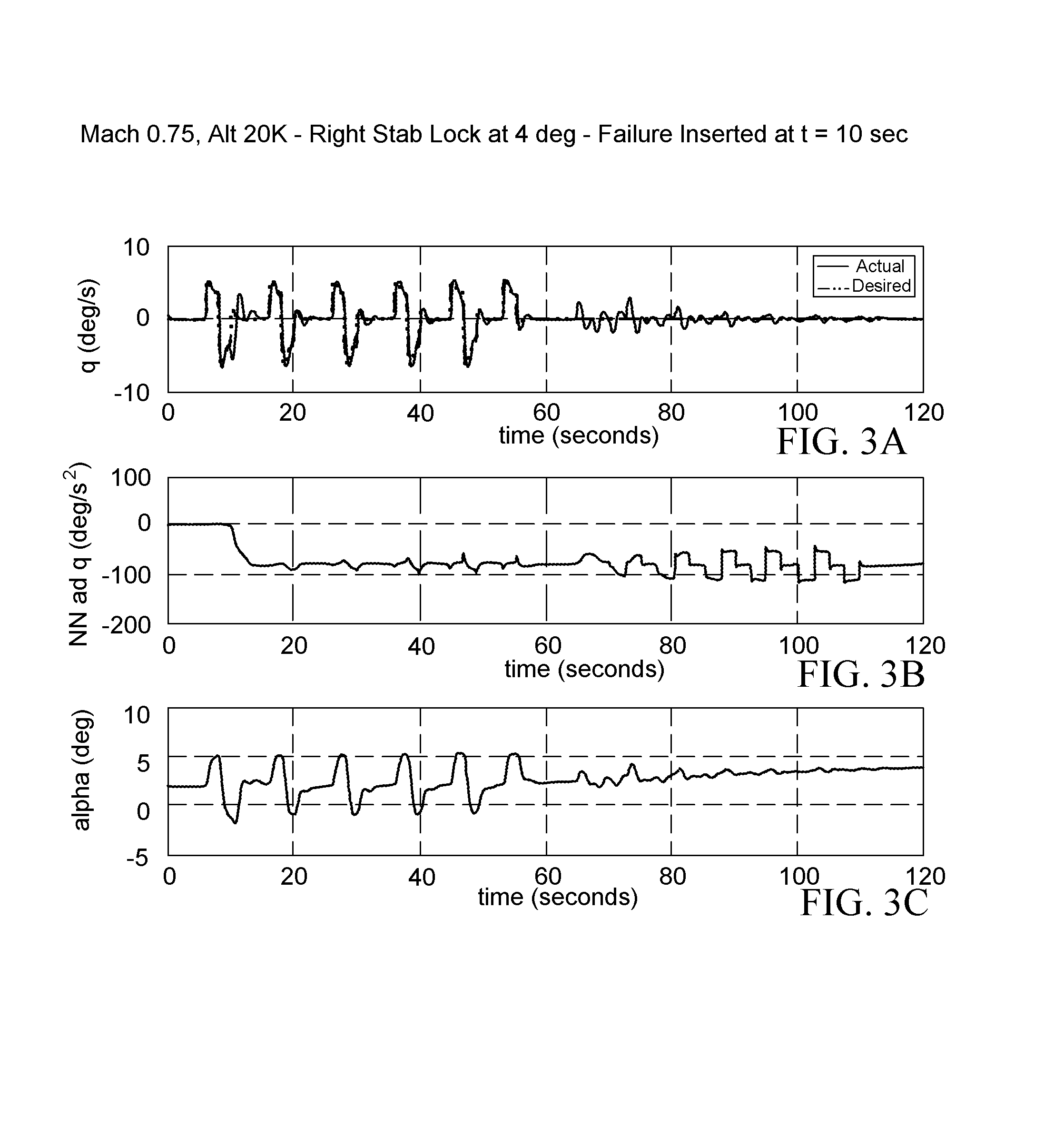Aircraft system modeling error and control error
- Summary
- Abstract
- Description
- Claims
- Application Information
AI Technical Summary
Benefits of technology
Problems solved by technology
Method used
Image
Examples
Embodiment Construction
[0018]An adaptive controller, according to the invention, updates the nominal baseline control approach only if there is a modeling error or damage occurs or a substantial change in flight configuration occurs that cannot be corrected in a conventional manner by the controller.
Control Architecture.
[0019]FIG. 1 presents the overall adaptive control architecture and schematically illustrates an embodiment of adaptive control architecture for practicing the invention. A reference module 11 provides a vector yref(k+1) of one or more aircraft system variables that are to be monitored and controlled, where k is a monotonically increasing time index. The reference vector yref(k) is received at a first difference module 13 that forms a difference vector, yref(k)−y(k)=e(k) that represents an error vector between a presently sensed aircraft system vector y(k) and the reference vector yref(k), which becomes an input signal for a proportional integral augmentation (PIA) module 15. An output sig...
PUM
 Login to View More
Login to View More Abstract
Description
Claims
Application Information
 Login to View More
Login to View More - R&D
- Intellectual Property
- Life Sciences
- Materials
- Tech Scout
- Unparalleled Data Quality
- Higher Quality Content
- 60% Fewer Hallucinations
Browse by: Latest US Patents, China's latest patents, Technical Efficacy Thesaurus, Application Domain, Technology Topic, Popular Technical Reports.
© 2025 PatSnap. All rights reserved.Legal|Privacy policy|Modern Slavery Act Transparency Statement|Sitemap|About US| Contact US: help@patsnap.com



